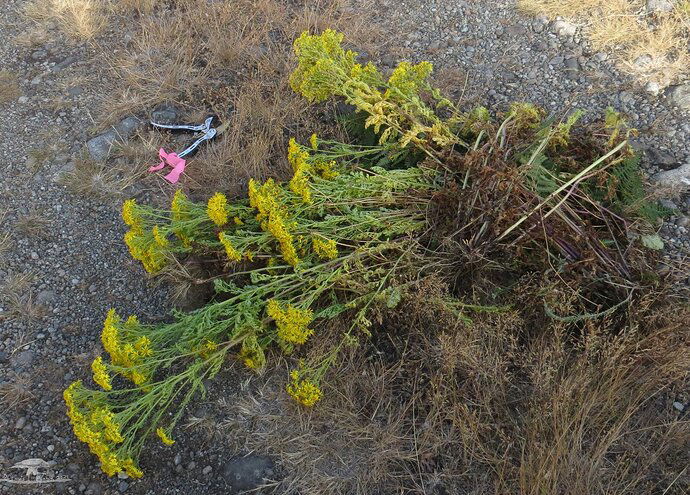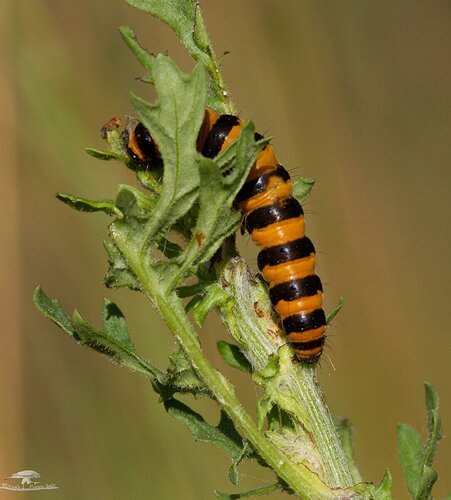I think this invasive gets more attention than some because it’s a stock poison. Most critters leave it alone-I’ve seen horse pastures where everything else was eaten to bare ground and there’s a big clump of this right in the middle (which doesn’t say much for the people’s pasture management). My wife got me started on this since she’s been horse crazy all her life. We have been keeping the local 1000 acre refuge clear of it for the last fifteen years and luckily as we’ve gotten older, the volunteer coordinator has stepped up and added help. The first image was a small part of one day’s gleaning. The flowers will go to seed after pulling or clipping, so we cut them off and bag them for disposal in a landfill. The second image is one of three introduced biological controls, the larva of the Cinnabar Moth. Unfortunately, it has recently been documented starting to feed on native plants as well. If you’re interested, I wrote an extensive Blog Post on this invasive for our Prairie Appreciation Day Blog last summer.
Specific Feedback Requested
Anything.
Technical Details
Is this a composite: No
The tansy on the ground was photographed with an old Canon P&S in auto. The Cinnabar Moth Larva was photographed with a Canon 5DIII and 180 mm f/3.5 macro at f/16, 1/80, iso 2000.

